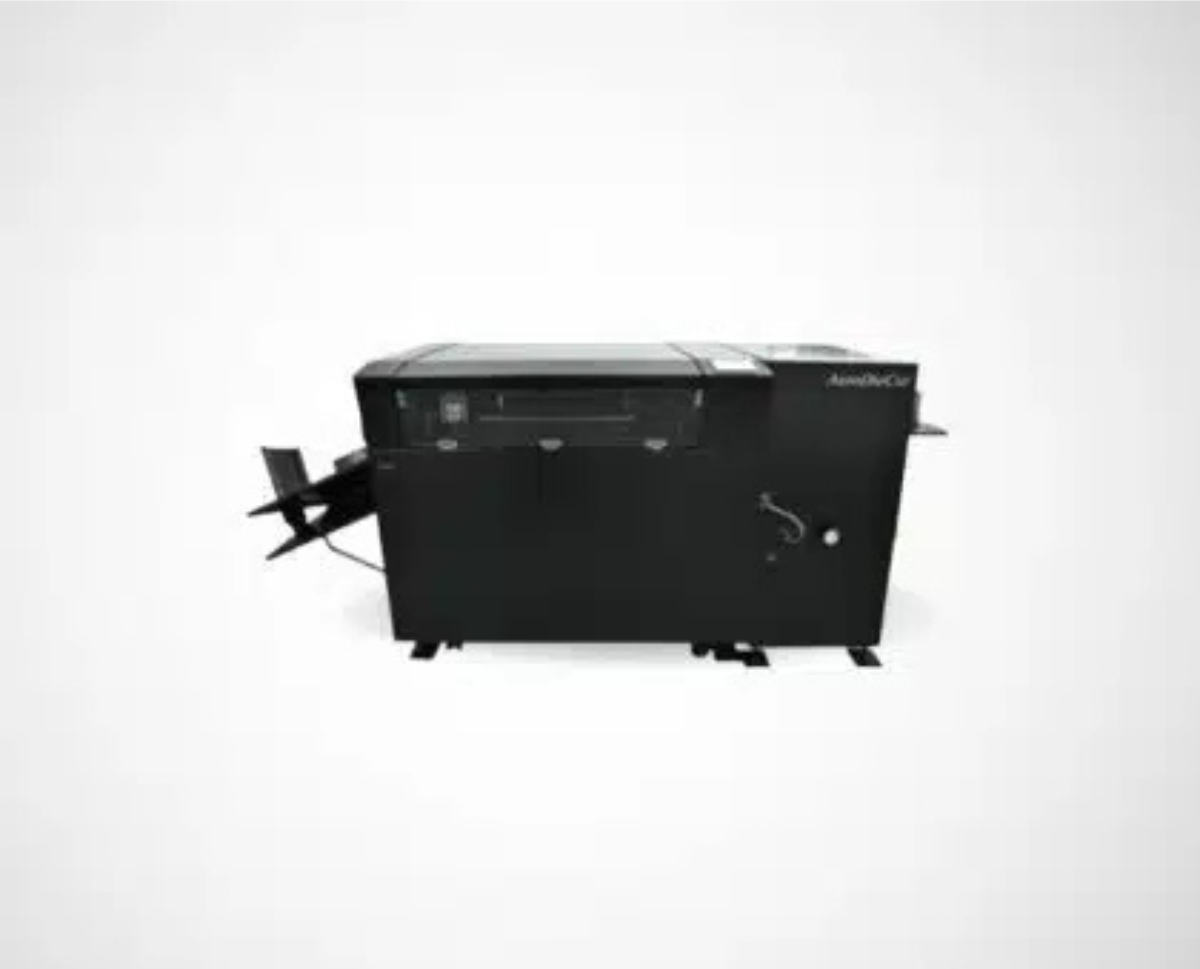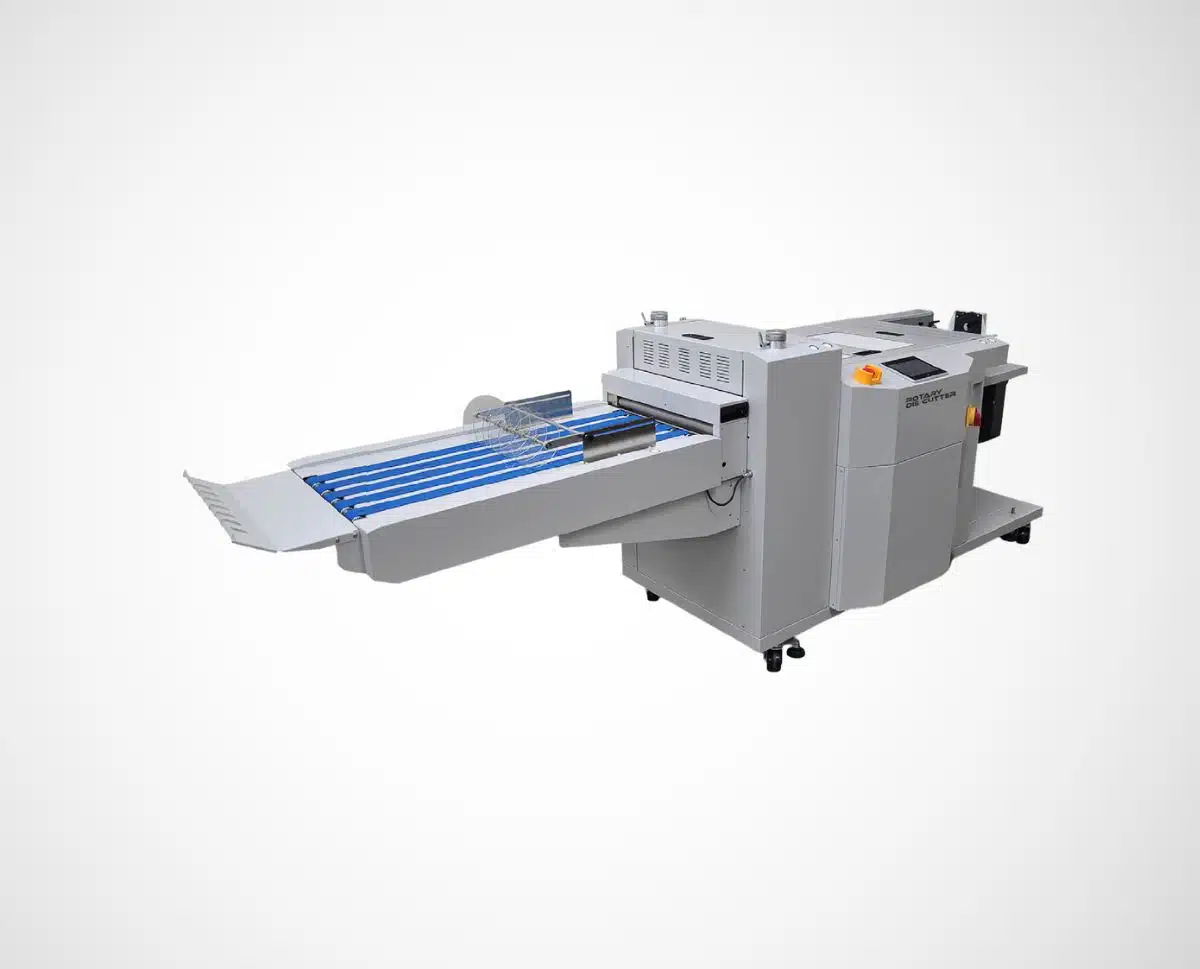Digital die cutters are perfectly suited for short-run finishing in digital printing. With growing demand for quick delivery, customized designs, and flexible order volumes—whether for specialty cards, packaging, or custom boxes—these systems provide an effective and modern solution. They offer a user-friendly alternative to traditional die-cutting equipment and deliver greater productivity than laser cutters or cutting plotters. Capable of executing intricate cuts, creases, and perforations in one seamless pass, digital die cutters help streamline complex finishing processes with speed and precision.
Digital Die-Cutting Solutions
Get the Perfect Cut with Our Specialized Digital Die Cutters
Our Solutions

UCHIDA AERODIECUT
Uchida AeroDieCut – Fast, precise, and easy short-run solution for custom cards and boxes with cuts, folds, and perforations in one pass.

MORGANA RDC
The Morgana Rotary Die Cutter (RDC) is built to meet the demands of today’s digital print industry, delivering precise custom-shaped products across short, medium, and long runs..
Advanced Technology Meets Proven Die Reliability
At the heart of this system is a smart blend of traditional and modern technologies. It uses standard dies—widely available, cost-effective, and proven for consistent high-quality finishing—so users benefit from strong, clean cuts while enjoying the advantages of modern innovations in speed and usability. Whether die cutting, kiss cutting, scoring, or perforating, the machine delivers precise results in a single pass, boosting both quality and production efficiency.
Explore Our Digital Die Cutting Solutions
Our digital die cutting lineup features two standout systems that deliver both precision and performance: the Uchida Aerodiecut and the Morgana RDC. The Uchida Aerodiecut uses flat metal dies to achieve sharp, high-quality cuts, making it ideal for intricate designs and specialty packaging. It excels at detailed creasing and perforating for applications like greeting cards, folders, and custom-shaped labels. The Morgana RDC, on the other hand, is a high-speed rotary die cutter built for efficiency in mid- to high-volume production. With its ability to cut, crease, and perforate with exceptional accuracy, it’s perfect for labels, cartons, and promotional materials. Together, these solutions offer unmatched flexibility and precision, helping printers overcome the limitations of traditional finishing methods.
Let’s Help You!
Our team of technical experts is prepared to provide consultation and support
Want to know more?
Download our brochures to explore each product category in detail.
Why Digital Die Cutting Matters?
Digital die cutting is transforming how businesses create and deliver their products, enabling greater creativity and faster turnaround times. It empowers brands to stand out with unique, high-quality designs that resonate with customers. By integrating this technology, companies can meet evolving market demands while maintaining exceptional standards. With AFRA Printechnik's solutions from trusted manufacturers Uchida and Morgana—capable of handling feedable sheet sizes up to 365 x 515 mm and materials up to 400 gsm—businesses are well-equipped to thrive in a competitive landscape and exceed customer expectations.
Digital Die-Cutter Solutions FAQ
What is a digital die-cutting machine?
A digital die-cutting machine is a versatile solution that uses digital files to cut a wide range of materials into custom shapes and designs with high precision. Its speed and accuracy make it ideal for industries such as packaging, printing, and promotional production.
Is it easy to operate a digital die-cutting machine?
Yes, our digital cutting solutions offer intuitive operation, enabling quick learning and efficient use with minimal training.
What kind of support is available for digital die-cutting machines?
Afra Printechnik is renowned for its after-sales support, providing reliable assistance for training and service whenever you need it
What should I consider when choosing a digital die-cutter?
When choosing a digital die cutter, consider factors like cutting speed, material compatibility, software integration, precision, and the machine’s size and space requirements. Evaluating these against your project needs will help you find the perfect fit.
